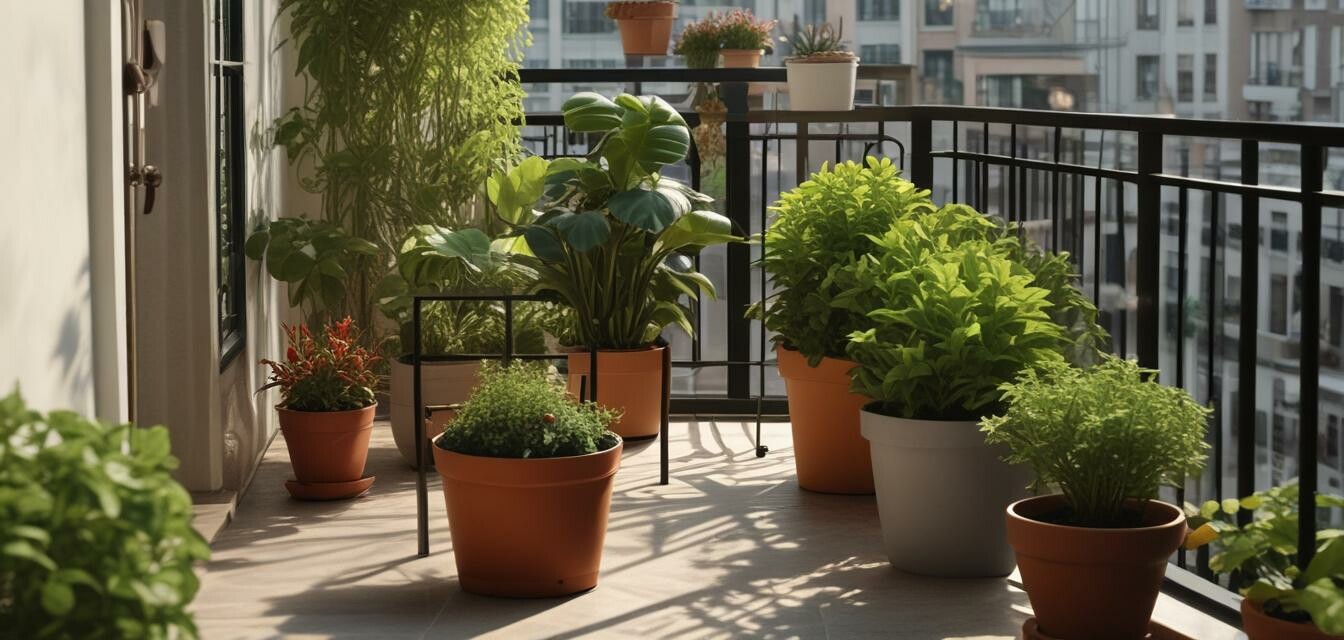
Seasonal planting guide for balcony houseplants
Key takeaways
- Different plants thrive in different seasons, affecting growth and aesthetics.
- Understanding your balcony's microclimate can enhance plant selection.
- Year-long maintenance, including watering and pruning, is essential for healthy plants.
- Consider herbs and spices for both beauty and utility in your balcony garden.
- Maximize space with vertical gardens and container plants to grow more varieties.
Creating a lush balcony garden doesn't have to be a daunting task, especially when armed with the right seasonal planting guide. Understanding which houseplants thrive during different times of the year can make a significant difference in how your balcony garden flourishes. This article provides insight into what to plant in each season, covering everything from vibrant flowers to delicious herbs.
Spring: Awakening your balcony garden
As the days grow longer and the weather becomes more pleasant, spring is an ideal time to refresh your balcony garden. Some fantastic options include:
- Pansies - Bright and colorful, they thrive in cooler temperatures.
- Petunias - Perfect for adding splashes of color and attracting pollinators.
- Herbs - Basil, parsley, and cilantro can be started as they prefer warmer weather.
- Succulents - Ideal for low maintenance and a variety of shapes and colors.
Spring planting tips
- Ensure good drainage in your pots to avoid root rot.
- Water plants regularly but do not overwater.
- Fertilize with a balanced nutrient mix to promote growth.
Summer: Thriving in the heat
During summer, your balcony is likely to receive a lot of direct sunlight. Plants that love the heat will thrive:
- Geraniums - Flowering plants that add vibrancy and attract butterflies.
- Tomatoes - Great for those wanting to grow their own veggies.
- Lavender - An aromatic option that also deters pests.
- Ferns - Perfect for shaded areas and adding greenery.
Summer care tips
- Increase watering frequency during the hottest days.
- Use mulch to retain moisture in the soil.
- Prune dead flowers to encourage new blooms.
Autumn: Time to transition
As temperatures begin to cool in the fall, it's time to prepare your balcony garden for winter. This is the best time for:
- Chrysanthemums - These hardy flowers bloom late and can withstand cooler temperatures.
- Ornamental cabbage - Adds color and texture as temperatures drop.
- Herbs - Sage and thyme can still be harvested during the cooler months.
- Houseplants - Transitioning indoor plants to outdoor pots can help acclimate them.
Autumn planting tips
- Monitor temperatures and bring sensitive plants indoors when it gets too cold.
- Start composting leaves to help improve soil quality for next year.
- Reduce watering as plants enter dormancy.
Winter: Indoor strategies
Winter might seem like a bleak time for gardening, but with the right care, you can keep your balcony lush:
- Pothos - A hardy houseplant that thrives indoors.
- Snake plants - Great for low light and minimal upkeep.
- Herbs - Indoor herbs like mint can prosper indoors and provide fresh flavors.
- Amaryllis - These bulb flowers can brighten up your indoor space.
Winter care tips
- Reduce watering; most plants need less water in winter.
- Keep an eye out for pests that may seek warmth in your home.
- Invest in grow lights if your balcony doesn’t get enough sunlight.
Conclusion
Your balcony garden can remain vibrant and productive year-round with proper seasonal planning. By selecting the right plants for each season and following simple care tips, you can enjoy a flourishing urban oasis. Embrace the changing seasons, and let your balcony reflect the beauty of nature all year long. For more tips on managing a successful balcony garden, visit our Gardening Tips category.
Pros
- Year-round enjoyment and aesthetic appeal.
- Opportunity to grow fresh herbs and vegetables at home.
- Promotes relaxation and reduces stress.
- Enhances the urban environment with greenery.
Cons
- Requires time and effort to maintain.
- Limited space may restrict plant variety.
- Weather can impact plant growth significantly.
- Potential for pest infestations if not monitored.